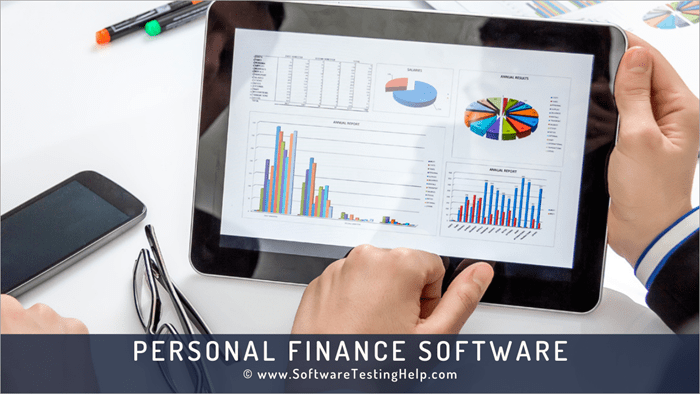Get ready to dive into the world of personal finance software, where managing your money becomes a breeze. From budgeting to tracking expenses, this software is your financial best friend, helping you reach your money goals with ease.
With a range of features and types to explore, personal finance software is the key to taking control of your finances like never before.
Importance of Personal Finance Software
Using personal finance software is crucial for effectively managing finances in today’s fast-paced world.
Benefits of Personal Finance Software
- Efficient Budgeting: Personal finance software allows users to create detailed budgets based on income and expenses, helping them stay on track financially.
- Expense Tracking: By inputting all expenses into the software, users can easily monitor where their money is going and identify areas for potential savings.
- Financial Goal Setting: Personal finance software enables users to set specific financial goals, such as saving for a vacation or paying off debt, and track their progress over time.
Features of Personal Finance Software
Personal finance software comes with a variety of features that help individuals manage their finances more effectively. These features are designed to simplify the process of tracking income and expenses, setting budgets, and planning for the future.
Key Features:
- Expense Tracking: Personal finance software allows users to easily track their expenses by categorizing transactions and providing detailed reports on where money is being spent.
- Budgeting Tools: Users can set up budgets for different categories and track their progress towards financial goals, helping them stay on track and avoid overspending.
- Financial Goal Setting: Many personal finance software programs allow users to set financial goals, such as saving for a vacation or paying off debt, and track their progress over time.
- Bill Payment Reminders: Automated reminders for upcoming bill payments help users avoid late fees and stay on top of their financial obligations.
Automation Features:
Personal finance software often includes automation features that streamline financial tasks and save users time. These features can automatically import transactions from bank accounts, categorize expenses, and generate reports without manual input. By automating these processes, users can focus on making informed financial decisions rather than spending time on administrative tasks.
Security Measures:
- Encryption: Personal finance software uses encryption technology to protect sensitive data, such as bank account information and personal details, from unauthorized access.
- Multi-Factor Authentication: Many programs require users to go through an additional security step, such as entering a code sent to their phone, to access their accounts.
- Regular Updates: Software developers regularly release updates to address security vulnerabilities and ensure that users’ data is protected from cyber threats.
Types of Personal Finance Software

When it comes to managing your finances, there are various types of personal finance software available in the market to cater to different user preferences and needs.
Mobile Apps
Mobile apps are convenient for users who prefer managing their finances on the go. These apps typically offer features such as expense tracking, budgeting tools, and bill reminders. They are user-friendly and accessible anytime, anywhere.
- Example 1: Mint – A popular app that allows users to track their spending, create budgets, and receive alerts for upcoming bills.
- Example 2: YNAB (You Need A Budget) – An app focused on helping users prioritize their spending and achieve financial goals.
Web-based Software
Web-based personal finance software is accessed through a web browser, offering flexibility and the ability to access your financial information from any device with an internet connection. These platforms often provide more robust features compared to mobile apps.
- Example 1: Personal Capital – A web-based platform that offers tools for budgeting, investment tracking, and retirement planning.
- Example 2: Quicken Online – An online version of the popular Quicken desktop software, providing features for budgeting, bill management, and investment tracking.
Desktop Software
Desktop software for personal finance is installed on a computer and offers a comprehensive set of features for managing finances. These programs often provide advanced tools for investment tracking, tax planning, and in-depth financial analysis.
- Example 1: Quicken – A long-standing desktop software that offers features for budgeting, investment tracking, and financial planning.
- Example 2: Microsoft Money – Another desktop software with tools for managing accounts, tracking expenses, and generating financial reports.
Best Practices for Using Personal Finance Software
When it comes to managing your money like a boss, using personal finance software can be a game-changer. But to really make the most out of it, you gotta follow some best practices. Here’s a guide to help you set up and use your personal finance software like a pro:
Setting Up Your Personal Finance Software
- Start by inputting all your financial accounts, including bank accounts, credit cards, loans, and investments.
- Set up budget categories based on your spending habits and financial goals.
- Connect your software to your accounts for automatic transaction syncing.
- Customize your financial goals and alerts to stay on track.
Maximizing Benefits in Budgeting and Investment Tracking
- Regularly review and categorize your transactions to understand your spending patterns.
- Use the budgeting tools to set limits and track your progress towards financial goals.
- Utilize the investment tracking features to monitor your portfolio performance and make informed decisions.
- Take advantage of reports and insights provided by the software to analyze your financial health.
Checklist for Selecting and Using Personal Finance Software
- Research different software options to find one that meets your specific needs and preferences.
- Consider factors like user-friendliness, security features, and compatibility with your devices.
- Read user reviews and ratings to gauge the reliability and effectiveness of the software.
- Take advantage of tutorials and customer support to learn how to use the software efficiently.
